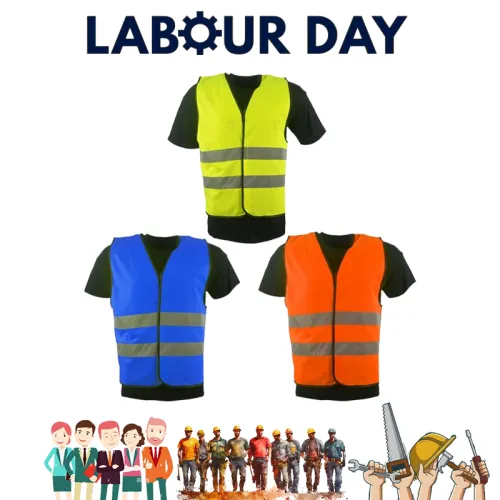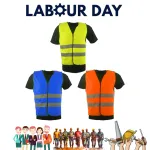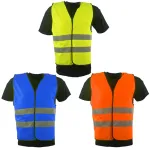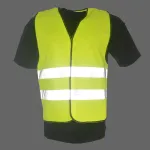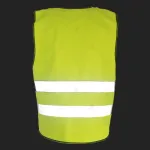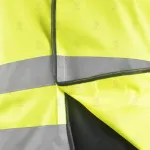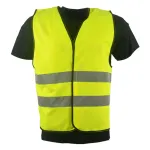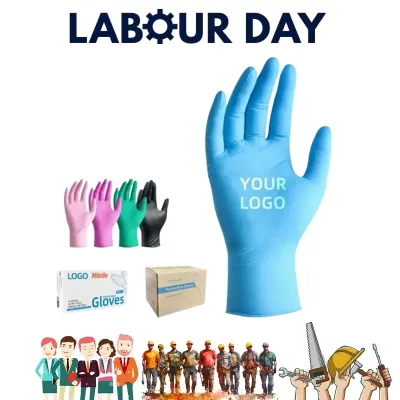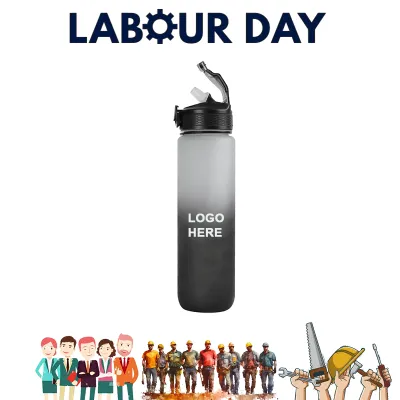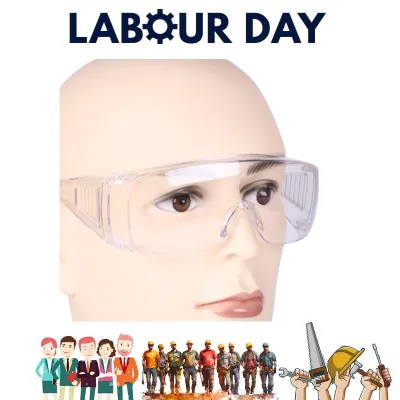High-visibility safety vest designed for construction, security, and industrial use. Made with reflective material for enhanced visibility and safety.
Select the color
Select Variant
Select quantity
Product Title: Safety Jacket / Security Vest / Reflector Vest / Construction Vest
Introduction
In today's industrial world, where safety and compliance are paramount, the importance of proper personal protective equipment (PPE) cannot be overstated. Among the most vital items in any PPE kit is the safety jacket, also known as a security vest, reflector vest, or construction vest. Designed to improve visibility and reduce the risk of accidents, these vests are essential for anyone working in high-risk environments such as construction sites, roadways, warehouses, and airports.
This comprehensive guide will explore the design, materials, usage, and benefits of safety vests in detail, highlighting their critical role in workplace safety.
1. Product Overview
Safety jackets are wearable garments that come equipped with high-visibility materials and reflective strips. These vests are typically worn over regular clothing and are available in fluorescent colors like yellow, green, and orange, making the wearer more visible to others, especially in low-light or high-traffic environments.
The core purpose of a safety jacket is to enhance the visibility of workers, ensuring that they are seen from a distance or in poor weather conditions. This significantly reduces the chances of accidents, especially in areas where heavy machinery or vehicles are in use.
2. Key Features
-
High-Visibility Material: Most safety vests are made of lightweight polyester or mesh fabric with bright neon colors for daytime visibility.
-
Reflective Strips: These are sewn onto the vest and shine brightly when illuminated by headlights or other lights at night.
-
Adjustable Fit: Many vests come with Velcro or zippered fronts for easy wear and removal.
-
Breathable Fabric: Especially important for outdoor or long-hour usage.
-
Pockets & ID Holders: Some models include additional functionality for storing small tools, pens, or ID cards.
3. Material Composition
High-quality safety vests are primarily made from:
-
Polyester: Offers durability, flexibility, and resistance to shrinking or stretching.
-
Mesh Fabric: Enhances airflow, keeping the wearer cool.
-
Reflective Tape: Usually made of retro-reflective materials that bounce light back toward the source.
These materials are not only chosen for comfort but also for their compliance with international safety standards such as ANSI/ISEA 107 or EN ISO 20471.
4. Types of Safety Vests
-
Class 1: Minimal traffic flow; worn in non-roadway environments.
-
Class 2: Moderate traffic or environments with higher visibility needs.
-
Class 3: High-speed roadways and dangerous settings.
There are also specialized versions such as:
-
Flame-resistant vests
-
LED-lit vests
-
Winter-insulated vests
5. Applications
Safety vests are commonly used in:
-
Construction Sites: Workers are exposed to moving vehicles and machinery.
-
Traffic Control: Law enforcement or flaggers require maximum visibility.
-
Airports: Ground staff must be visible on runways.
-
Event Security: Identifies personnel and improves crowd management.
-
Warehouse Operations: Keeps workers visible in large storage facilities.
6. Importance of Safety Vests
Wearing safety vests can:
-
Prevent Accidents: Visibility can mean the difference between a safe shift and a critical injury.
-
Ensure Legal Compliance: Many jurisdictions mandate the use of high-visibility clothing.
-
Improve Team Identification: Color-coded vests help identify roles quickly on job sites.
-
Enhance Public Trust: A visible and organized team reflects professionalism.
7. Customization & Branding
Modern safety vests can be custom printed with company logos, names, or job titles. This adds a layer of brand visibility while maintaining safety standards. Reflective printing is also available for added safety during nighttime operations.
8. Sizing and Fit
Available in various sizes, most vests come in universal or adjustable options, suitable for different body types. Some designs offer a snug fit, while others allow layering over heavy clothing or jackets.
9. Maintenance Tips
-
Regular Washing: Use mild detergent and air dry to maintain reflective quality.
-
Storage: Hang to avoid wrinkles and preserve material integrity.
-
Inspection: Check for tears, faded reflective strips, or loose seams.
10. Buying Guide
When purchasing a safety jacket:
-
Ensure it meets ANSI/ISEA or EN standards.
-
Check for reflective coverage and visibility.
-
Choose according to work environment (day/night, indoor/outdoor).
-
Consider durability and breathability.
-
Look for additional features like pockets, ID holders, or reinforced seams.
11. Environmental Considerations
Some manufacturers now offer eco-friendly vests made with recycled polyester. These are ideal for companies aiming for sustainable procurement practices.
12. Case Studies
Example 1: Construction Site in Dubai Contractors saw a 30% reduction in on-site accidents after mandating the use of high-visibility vests.
Example 2: Event Security in Abu Dhabi Branded reflective vests helped attendees identify staff easily, improving event management and safety.
Conclusion
The safety jacket is a critical component of personal protective equipment across industries. Its role in preventing accidents, ensuring compliance, and improving overall workplace safety is unmatched. Whether you operate in construction, logistics, security, or public services, investing in high-quality, reflective safety vests is a proactive step toward protecting your workforce and maintaining operational efficiency.
With customization options and durable materials, today’s safety vests not only protect but also promote a professional image. Make the smart choice—choose certified, high-visibility safety gear for every worker on your team.
| Product Name | Item Weight( Kg ) | Pieces in Pack | Carton Weight ( Kg ) | Carton Size ( Cm ) |
 Safety Jacket Security Vest Reflector Vest Construction Vest SKU: EL-VST-02-GR |
0.1300 | 1000 | 0.0000 | 30X25X2 |
 Safety Jacket Security Vest Reflector Vest Construction Vest SKU: EL-VST-02-OR |
0.1300 | 1000 | 0.0000 | 30X25X2 |

